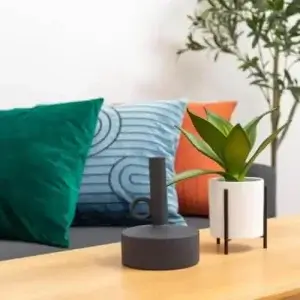Home / Compare Home And Content… / Accidental damage cover
Accidental damage cover
Protect your home and valuables against mishaps



Key takeaways
- Accidental damage cover generally provides financial protection for damages from accidents that occur in your home.
- It typically covers mishaps like dropping your TV, red wine spills and glass door breakage.
- Things like general wear and tear, malicious damage and faulty workmanship are typical exclusions from accidental damage cover.
Expert tips on accidental damage cover
Our home insurance expert, Adrian Taylor, has some helpful tips on accidental damage cover in your home and contents insurance policy.

Check the PDS of your policy for this cover
Accidental damage is usually an optional extra, but some policies may automatically include it. This is why it’s important to read the PDS or contact your insurer to be sure.
You can change policies at any time
If you want to switch to a new policy, you can cancel your existing policy whenever you like. If you paid your premium upfront in full, your insurer may refund you for the remaining period of your cover; just be aware of any cancellation fees that may apply.
You have options to lower your premium costs
You can lower your premium by increasing your policy’s excess. Keep in mind that this is the amount you may need to pay in the event of a claim, so make sure you choose a manageable amount.
The basics of accidental damage cover
What is accidental damage cover in home insurance?
Accidental damage cover typically provides financial protection for damages as a result of unintended events in your home. It’s generally offered as an optional extra which can be added to your home and contents policy, as well as standalone home building and contents only policies.
How much does accidental damage cover cost?
 When it’s included in your home and contents policy, the cost of your insurance overall will depend on a variety of factors, including, but not limited to:
When it’s included in your home and contents policy, the cost of your insurance overall will depend on a variety of factors, including, but not limited to:
- Your level of cover
- The value of your belongings and the building
- The crime rate of your suburb
- Whether your area is prone to natural disasters.
However, if your insurer offers accidental damage as an optional extra, adding it to your policy could increase your premiums.
Inclusions and exclusions
What’s usually included in accidental damage cover?
Accidental damage cover is there to provide financial protection in scenarios such as:
- Dropping your TV
- Accidentally spilling red wine on carpet
- Breaking the glass on your sliding door
- Breakage of some fragile items like glass, ceramics and electronic screens.
The table below provides a summary of insured events and whether they’re covered by accidental damage cover.
| Event | Home insurance policy | Contents insurance policy |
|---|---|---|
| Accidental damage to the walls and fixtures | ✓ | ✗ |
| Accidental damage to furniture and rugs | ✗ | ✓ |
| Broken glass/ceramics | ✓ (may include windows, basins and glass cooktops) | ✓ (may include ornaments, lamps and crystalware) |
| Damage to sports equipment | ✗ | ✗/Optional extra |
| Damaged caused by removalists or renovations | ✗ | ✗ |
Check the relevant Product Disclosure Statement (PDS) for full details of what is and isn’t covered under your specific policy. You should also read the Target Market Determination (TMD) to determine whether the product may suit your needs.
What instances aren’t insured by accidental damage cover?
Insurance claims for the following scenarios generally won’t be accepted:
- General wear and tear to your home and possessions
- Deliberate, malicious damage by yourself, other residents or your guests
- Damages from renovations
- Faulty workmanship
- Pre-existing damage.
Check your PDS for the full list of inclusions and exclusions, as well as other terms and conditions.
Does accidental damage cover protect all my contents?
There are some common exclusions to what’s covered by accidental damage cover, including items like:
- Laptops
- Mobile phones
- Remote control toys or models
- Sports equipment (if it’s damaged while in use).
You’ll typically be able to add personal effects cover to your policy to protect those portable items you take outside of your home (like your phone).
Meet our home and contents expert, Adrian Taylor
As a General Insurance expert with over 13 years’ experience in financial services, Adrian Taylor works to make it easier for homeowners, renters and landlords to protect their home and contents. He believes it’s important for all residents (whether they rent, own or lease) to have adequate financial cover for their property and belongings in case the worse should happen.
